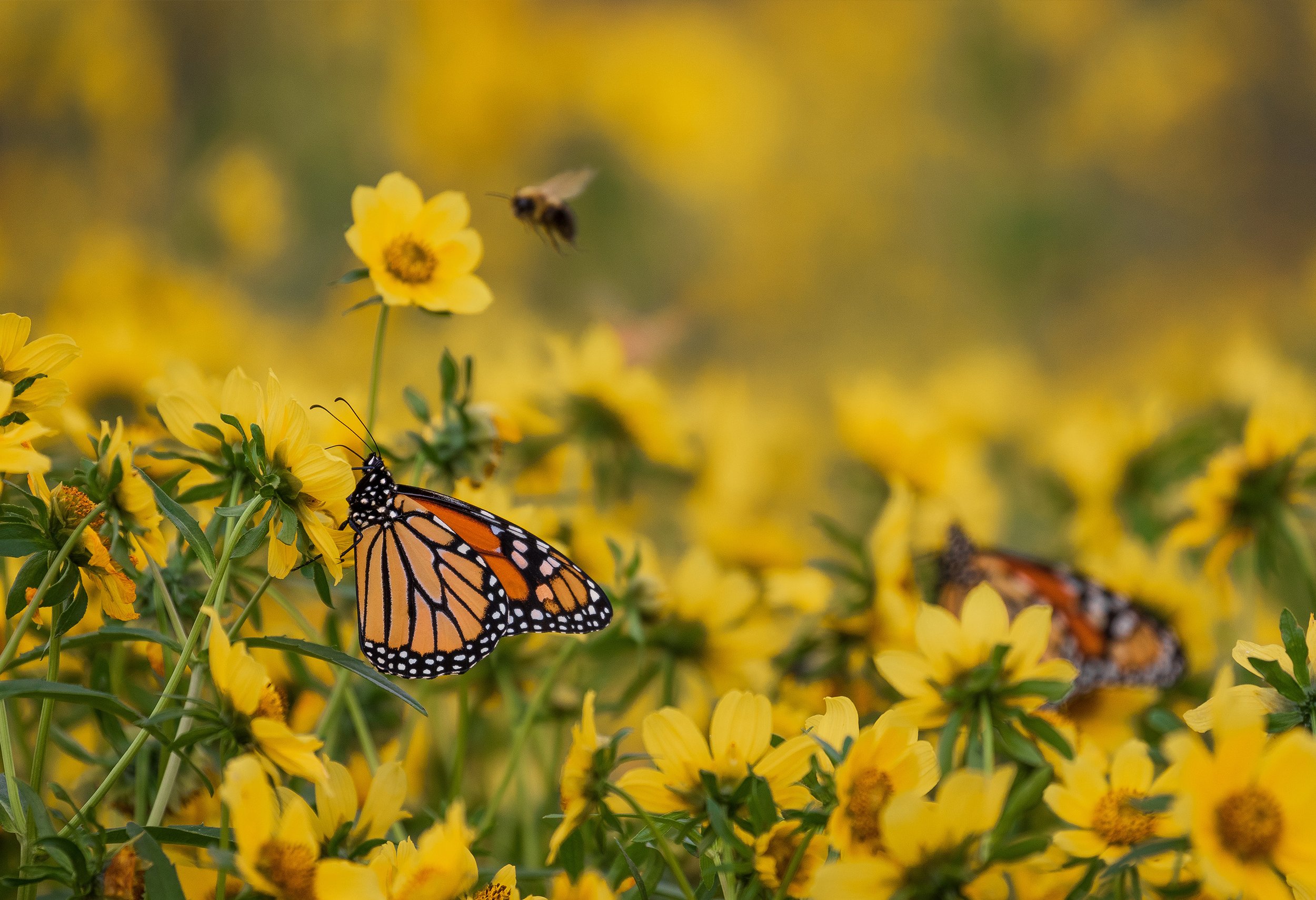What is a Native Plant?
We talk about native plants a lot at Christy Webber Farm & Garden—but what exactly is a native plant? What is a non-native plant, or even an invasive?
As when discussing what makes a plant a weed, the answer can be complicated and there isn’t always universal agreement—but we hope this is a helpful starting point for your own native plant journey.
Native Plants
Native plants are plant species that occur naturally in a given area. In the Chicago area, these are the plant species that evolved together to form our prairies, woodlands, wetlands and other ecosystems after the last glaciers receded more than 10,000 years ago.
Plants in our area are generally considered native if they were present before European settlers arrived and began displacing Indigenous peoples, the original stewards of this land. (Indigenous people still practice their heritage and traditions in the Chicago area, which has the third-largest urban Indigenous population in the U.S.)
Non-native Plants
Non-native plants (or introduced plants) are plant species that don’t occur naturally in a given area, and have fewer functional relationships in local ecosystems. In the Chicago area, these are often plants that were intentionally or accidentally brought to the area from overseas, through colonization and global trade.
Invasive Plants
Invasive plants are plant species that tend to spread aggressively at the expense of other plants. These plants dominate resources—like sunlight, water and nutrients—and in some cases may even take active measures to harm nearby plants. (BTW, you can help remove invasive plants and support native plants by volunteering at your local forest preserve.)
In the Chicago area, most plants we consider invasive are non-native plants introduced from far outside our region (usually other continents). But plants from much closer places, including other parts of North America, could be called invasive if they are introduced into disturbed areas or specific ecosystems where they didn’t evolve.
Now you have a handle on what makes a native plant, so let’s complicate things with a couple more concepts…
Cultivar vs. Straight Species
Until recently, most of the native plants available at garden centers were cultivars (sometimes called nativars). These plants started as wild native plants, but were selectively bred and modified for ornamental purposes to create consistent (and sometimes unique) characteristics—like size, foliage, flower color and more.
For example, the petals on the flowers of wild purple coneflower (Echinacea purpurea) are… purple. In cultivation, however, they are now available in white, orange, red, pink and more.
Straight species (also called wild-type) native plants are grown from seed that originated in wild populations, and have not been selectively bred or genetically manipulated. These plants have more genetic diversity than cultivars, and often have less uniform characteristics.
Local Ecotype
Some plants native to the Chicago area have huge ranges across the U.S. For example, little bluestem (Schizachyrium scoparium) is native to Chicago, but you can also find populations of it growing naturally in Maine… and Arizona… and Florida. If you live in Chicago, you probably don’t want little bluestem grown from seed collected in Florida, where the climate and soil conditions are very different—you want little bluestem adapted to the Great Lakes!
An ecotype refers to the genetic makeup of a given native plant population, so a local ecotype is from a nearby area (and is the result of thousands of years of adaptation to local conditions). Planting local ecotype native plants helps bolster locally adapted native plant populations, and the native pollinators and wildlife that depend on them.
Tips for Buying Native Plants
So what kind of native plants should you buy? It depends on your goals.
If you are trying to support native pollinators and other wildlife, we always recommend straight species native plants, and especially local ecotype native plants—give local pollinators the plants they evolved with!
If your concerns are mostly aesthetic or you have space constraints, you might consider using native plant cultivars in your garden, which can provide more uniform results.
While there isn’t enough research to definitively say that native plant cultivars are worse for pollinators and other wildlife than straight species plants, certain modifications seem to cause more problems than others. For example, if the flower structure has been changed dramatically, can a native bee still access the pollen? If a cultivar has darker leaves, can it still be eaten by important native insects? It will take more research, and the answer may always depend on the particular species and characteristics at play.
At Christy Webber Farm & Garden, nearly all of the plants in our Native Plants department are straight species, local ecotype native plants—grown with seed from plants adapted to local conditions. In our Perennials department, you’ll also find many cultivars of native plants that have a more ornamental focus.
Wherever you are on your native plant journey, we’re here to help. Stop by to chat and we can help you decide how to best include native plants in your yard (or balcony or rooftop). We also offer native plant consultations in Chicago—reach out to cooper.forsman@cwfng.com for details.

